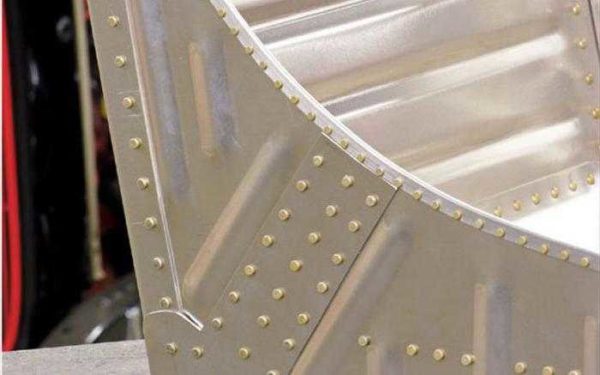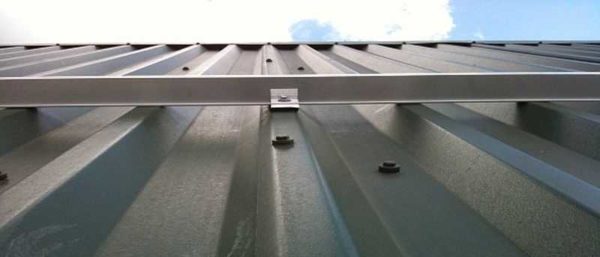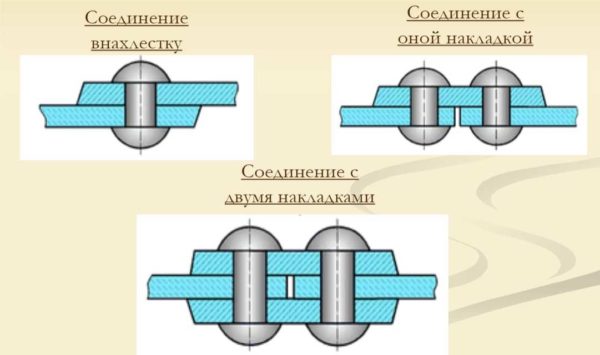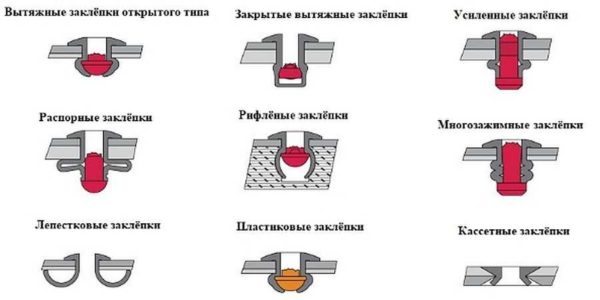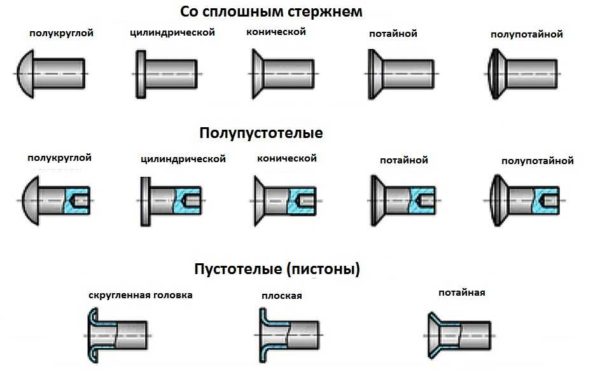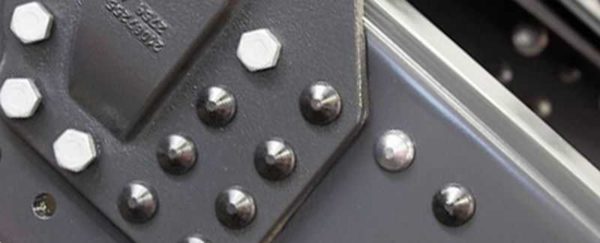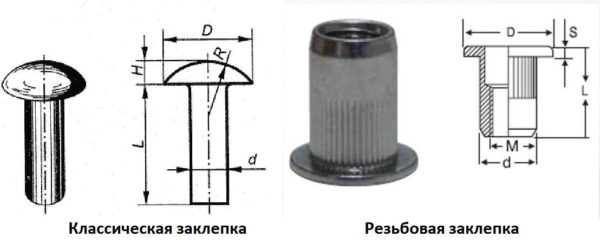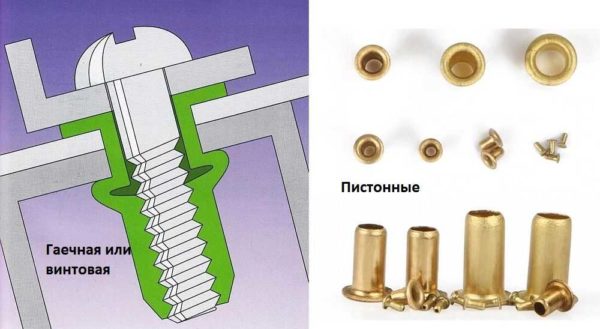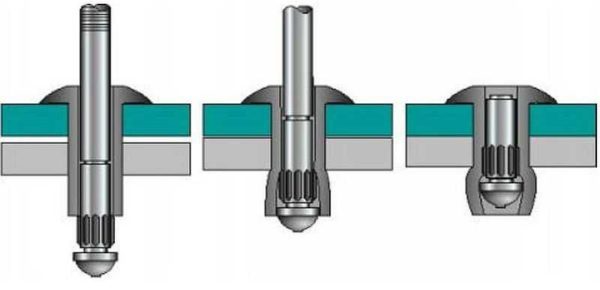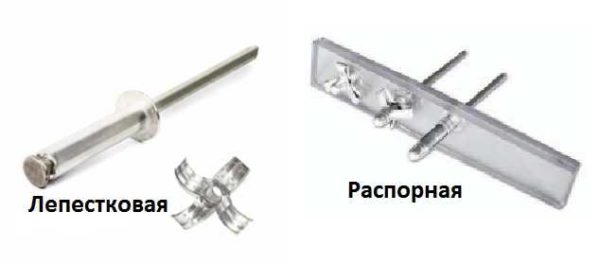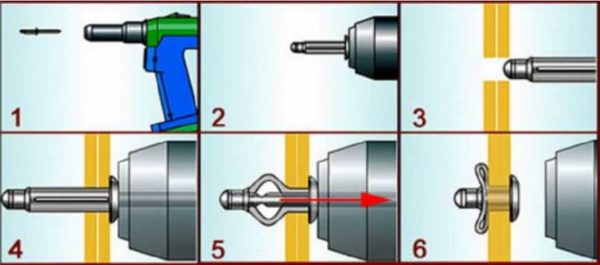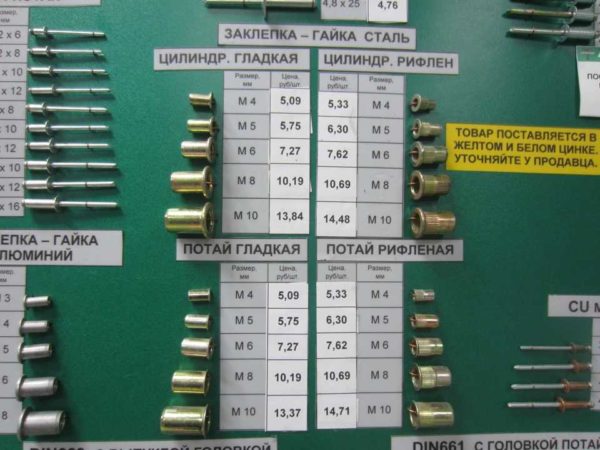Using rivets for riveting metal and other materials
Welding is, of course, good, but it cannot be used everywhere. In this case, riveting is used - this is a mechanical connection of parts using special fasteners. This fastener is called rivets, they are made from different materials, there are different types.
The content of the article
What is riveting
The mechanical connection of parts using a series of rivets is called a rivet, and the connection itself is a riveted seam. Used where weld parts inconvenient or non-weldable materials are connected. Not only metals are riveted, thus they connect parts in clothes, accessories, etc. But there it is more of a finish than a loaded connection. So further we will talk about riveting in construction or home improvement. In principle, instead of riveting, you can use a screw connection, but bolts and nuts are more expensive, and their installation takes more time.
If we talk about installing profiled sheet fences, rivets are more reliable, since they can only be removed by reaming the fasteners. When installing screws or self-tapping screws, they can be unscrewed and carried away both metal and hardware. In some cases, riveting is more convenient when installation of roofing from corrugated board or metal tiles... On the roof, installing screw connections is problematic and time-consuming. And rivets, and with a good tool, can be done in an hour or even less.
How are parts connected with rivets? The rivet is installed in the prepared through hole. It has a head that abuts against the material and the rod. During the riveting process, the end of the rod is flattened, changing its shape under the influence of force. Therefore, plastic metals are used for these hardware.
Types of riveted seams
If we talk about the method of joining sheets, then riveted seams are overlapped (one sheet is superimposed on another) and end-to-end. Docking seams can be with one or two overlays. More reliable with linings, they are used in critical and loaded places.
By location of rivets:
- single row;
- double row;
- multi-row.
They can be located opposite each other or in a checkerboard pattern. Seams can be strong, tight (tight) or strong-tight. Dense ones are performed using elastic gaskets laid between the parts to be joined. Strong-tight are mainly used in boilers. Now they are more often replaced by welding.
Types of rivets
What is a rivet? It is a cylindrical rod made of ductile metal (it can be hollow or not) with a shaped head at one end. This head is called a mortgage. During installation, by flattening the metal of the rod from the second side, a second head is formed. It is called closing (closing).
There may be multiple rivets (such as popular blind rivets or screw rivets) that consist of a body and a shank. But this does not change the essence: the embedded head rests against the material, and at the other end, due to the plasticity of the metal, a second head is formed. It is simply formed due to the fact that the rod is pulled out and the expanded part crushes the second part.
Types of rods and embedded heads
Rivets differ in head shape and shank. By the type of the rod, they are:
- with a solid rod (high load capacity, but difficult to install);
- semi-hollow (part of the rod near the mortgage head is solid, part is hollow);
- hollow (the head and the rod have a cylindrical solid hole, they are easily riveted, but they do not tolerate high loads).
Rivets have the following types of heads (pictured above):
- Semicircular (high and low). Sometimes it is also called spherical. The most reliable, create a strong seam.
- Cylindrical and conical (flat). They are used if the connection is in an aggressive environment.
- Secret and semi-secret. Installed when fasteners should not protrude above the surface. The most unreliable connection, used only when necessary.
Each type of insert head meets each type of rod. They are selected depending on the planned load. For maximum loads, hardware with a solid core and a semicircular head are needed. Hollow joints can also be used on not too stressed joints, but they do not provide tightness. If such a characteristic is important, then they put semi-hollow.
Types of rivets
Despite the fact that welding has become available even to a non-professional, riveting does not lose its popularity. After all, not all metals can be cooked, and the welded seam is subject to corrosion. Therefore, new varieties of rivets are constantly appearing, so there is definitely no complete list. Let's consider the main and more popular ones.
- Classic or regular. Universal, used for all types of seams. It can be distinguished externally - they resemble fungi.
- Semi-tubular (stem is half hollow). They require less effort during installation, but also have low strength. Used in joints with low mechanical stress.
- Embedded, exhaust, tear-off or traction. Composite (two-piece) hardware. The good thing is that during installation they do not need to be held on the second side of the seam. For the installation of fences or the installation of roofing materials, they are used.
- Pistone. They are used for joints with low load, they are made mainly of soft metals (aluminum and alloys, copper).
- Threaded (nut). For joining parts with thin walls (up to 0.3 mm). They differ in that the inner part has a cut thread, the outer part has a vertical notch that prevents rotation around its axis. A screw is tightened inside, pulling the free part of the case to the connection. This is how it turns out - due to creasing - the closing head.
These are the main types of rivets that are used in construction, mechanical engineering and other fields. Each of the species has its own subspecies, differing in nuances.
Blind rivets
Let's say a few words separately about the blind rivets. They are used for fastening profiled sheets and metal tiles. It is with them that you most often have to deal with the arrangement of the site. The blind rivet consists of a tubular body and a solid rod inserted inside. They are called composite because they have two independent parts. Also, this fastener is reinforced - after installation, part of the rod remains inside, which increases the strength of the connection.
The length of the rivet body must be greater than the thickness of the parts to be joined. It is inserted into a pre-made hole, after which riveter captures the rod, pulls it through the hollow body. At the far end of the rod, there is a ball that forms a locking head from the flared edge of the body. The excess rod is removed by the tool, but some of it remains inside, which makes such a connection strong enough.
As is clear from the description, it is important to choose the right rivet size. Too short will prevent a normal bead from forming, which will weaken the connection.Too long body will give a lot of backlash, which is also not good. So when choosing this type of fastener, carefully look at the recommended thickness. Ideal if your connection is in the middle of the range.
Rivets for joining loose and soft materials
For joining soft and plastic materials - plastic, chipboard - the above hardware is not suitable. There is another type of similar fastener for them. It is not so large and less durable. But, during installation, less force is created so as not to destroy the materials.
There are the following types of rivets for joining plastic or soft materials:
- Petal. When installed, the rivet body opens up into several petals. The large contact area of such a closing head allows the load to be redistributed.
- Spacer. This is a subspecies of exhaust, but with notches along the body. When installed, they fold, forming also a kind of petals, but double. In this case, the head of the hardware remains on the surface of the part, without going deep into the material.
There are also plastic rivets. They are usually made for furniture, sometimes for fixing decorative panels. These rivets are more like screw rivets. The lower part is cut into several petals; inside there is a thread along which the rod is screwed. As it twists, the rod moves apart the body, which is held in place by friction.
Metal riveting
The metal riveting process consists of two stages: the preparatory and the actual installation of hardware. Preparation - drilling holes, if necessary countersinking for countersunk heads. Please note that countersunk heads can be on one (either) side or on both.
The riveting process itself is as follows:
- insert a rivet;
- pull off the parts to be connected;
- form a closing head with a tool;
- check and clean the connection.
With a good instrument, work goes quickly. For private use and one-time work, manual riveters are usually used. And even with them, the process itself (without drilling holes) takes a matter of seconds. If we talk about installing a profiled sheet or metal tiles, it is recommended to coat each hole made with paint - to prevent corrosion. It is these processes - drilling and painting - that take a long time.
Generally, there are two ways to install rivets: cold and hot. When hot, the joint is preheated to a certain temperature (determined by the metal and the thickness of the parts). In practice, it is used when installing large diameter rivets - 12 mm or more.
Rivets are placed in rows. The minimum distance between adjacent ones is 4 diameters, from the edge of the sheet to the center of the hardware - not less than 1.5 diameters of the rivet. When attaching the profiled sheet, they are placed in a recess, not in a wave.
Sizing rivets
Rivets are selected based on the thickness of the metals to be joined. In this case, the following are important: the parameters of the insert head, the diameter of the rod. The diameter of the bar determines the diameter of the drill, which is used to prepare a hole in the parts to be joined. You can roughly determine the diameter of the rivet by doubling the thickness of the parts to be joined. The length of the rod is at least 2 diameters of the rivet, and the protruding part must be at least 1.25-1.5 of the diameter.
| Rivet diameter | 2.0 mm | 2.3 mm | 2.6 mm | 3.0 mm | 3.5mm | 4.0 mm | 5.0 mm | 6.0 mm | 7,0 mm | 8.0 mm |
|---|---|---|---|---|---|---|---|---|---|---|
| Precision bore diameter | 2.1 mm | 2.4 mm | 2.7 mm | 3.1 mm | 3.6 mm | 4.1 mm | 5.2 mm | 6.2 mm | 7.2 mm | 8.2 mm |
| Hole diameter for rough assembly | 2.3 mm | 2.6 mm | 3.1 mm | 3.5mm | 4.0 mm | 4.5 mm | 5.7 mm | 6,7 mm | 7.7 mm | 8,7 mm |
In general, the diameter of the rivet shank can be from 1mm to 36mm, and its length can be from 2mm to 180mm. Moreover, a larger diameter is not equivalent to a greater bond strength. Here both the material from which it is made and its type (hollow or solid) play a role.How do you choose? According to the characteristics of rivets. After all, you choose them for the connection of certain materials of a certain thickness. You know about the load that will be applied to the connection. Therefore, when selecting, pay attention to what the manufacturer recommends.
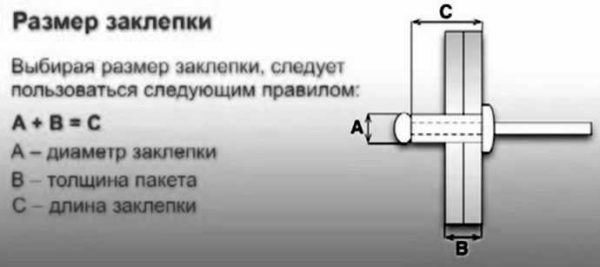
How to choose a rivet according to the thickness of the material to be fastened? According to the manufacturer's instructions, but in general, the diameter of the rod should be at least twice the thickness of the materials
It must be indicated:
- Recommended connection diameter. You just have to pick up the drill and make a smooth hole without burrs.
- Minimum and maximum thickness of the bundle to be joined. It is important that your connection is in the specified range.
- Shear force. This is the load applied perpendicularly to the joint that the rivet can withstand without breaking.
- Breaking force. At what load along the rivet will it break.
It is the tensile and shear forces that determine the strength of the future seam. The higher these values are, the more loads it will withstand.
What material should the rivet be of
Rivets are usually taken from the same material as the parts to be joined to avoid electrochemical corrosion. Pay attention to the strength characteristics. But, as a rule, when joining aluminum parts, the strength of aluminum hardware is sufficient.
In general, rivets are made from the following metals:
- steel:
- ordinary - grades St2, St3, St10;
- corrosion-resistant Х18Н9Т;
- galvanized;
- alloyed (stainless) - 9G2, 304, 316.
- copper MT and M3;
- aluminum alloys (more often AD1, D18);
- aluminum-magnesium (AlMg2.5; AlMg5; AlMg3),
- brass (L63).
When connecting copper parts, the installation of brass and copper is permissible. Aluminum is bonded with aluminum alloys. Steel sheets - corresponding grades of steel rivets. There are also mixed hardware - from two different metals (chemically non-conflicting). Most often, there are aluminum-steel.
For installation of facade elements, slopes, ebbs, metal tiles and profiled sheets, blind rivets made of galvanized painted steel are usually used. Coloring to match the details.

